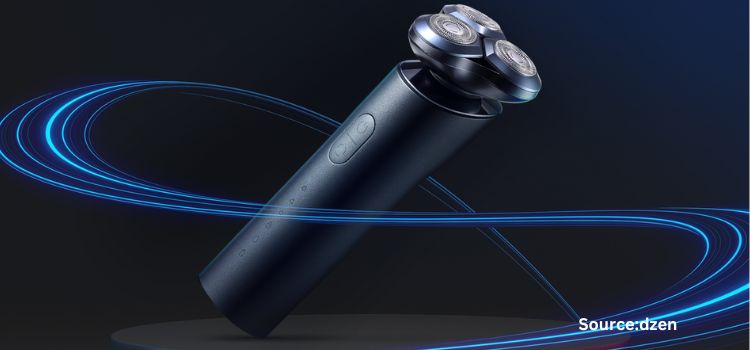
Room Air Conditioner (RAC) Market by Type (Window Air Conditioner, Split Air Conditioner, Portable Air Conditioner, and Floor Mounted Air Conditioner), by Capacity (<5000 BTU, 5000-10000 BTU, 10000-15000 BTU, and > 15000 BTU), by Technology (Inverter Air Conditioner and Non-Inverter Air Conditioner), and by Distribution Channel (Online Sale and Offline Sale) – Global Opportunity Analysis and Industry Forecast 2024-2030
US Tariff Impact on Room Air Conditioner (RAC) Market
Trump Tariffs Are Reshaping Global Business
Market Overview
The global Room Air Conditioner (RAC) Market reached a value of USD 39.44 billion, and it is projected to surge to USD 60.69 billion by 2030 with a CAGR of 5.8% from 2024-2030. The room air conditioner (RAC) market refers to the segment of the broader air conditioning industry that focuses specifically upon air conditioning units designed for single-room use. These units characterized by their compact size and moderate power are ideal for businesses seeking to condition individual rooms or small workspaces without the extensive installation and operational costs associated with central air conditioning systems.
The primary goal of this market is to provide energy-efficient, cost-effective, and easily deployable air conditioning solutions that maximize space utilization, enhance comfort for employees and clients, and offer advanced features such as user-friendly controls, mobility, and improved air quality. This technological integration supports the operational efficiency and sustainability, making RAC units a versatile choice for individuals seeking modern, responsive, and cost-effective air conditioning solutions.
Market Dynamics and Trends
The global temperature is increasing steadily due to climate change and it is increasing demand for immediate relief from heat stress. This trend is leading to a surge in the adoption of room air conditioner in residential settings. As per National Oceanic and Atmospheric Administration (NOAA) 2023, the global temperatures exceed the 20th-century average of 57.0°F (13.9°C) by a significant margin of 2.12°F (1.18°C). Record-high global temperatures in 2023 have fuelled the demand for room air conditioner market as individuals seek relief from heat stress.
Moreover, the ongoing advancements in cooling technology have resulted in the creation of energy-efficient and eco-friendly room air conditioner thus driving the market. As per American Chemical society (ACS) 2022, the scientists reported development of a prototype device that replaced existing air conditioner in the market. The device employed solid refrigerants to effectively cool a space and demonstrated markedly enhanced environmental friendliness when compared to traditional air conditioning systems.
Additionally, the rapid urbanization especially in densely populated cities increases the demand for room air conditioner to maintain comfortable living and working spaces. As per the World Bank 2023, more than 50% of world's population projected to reside in urban areas by 2045, this urban population is projected to reach a staggering 6 billion people. This projected growth is creating ample demand in RAC industry.
However, the potential environmental impact due to refrigerant emissions and energy consumption is hindering the room air conditioner market growth. On the contrary, the integration of Internet of Things (IoT) technology in air conditioner enables remote control, energy management, and enhanced user experience through smart home ecosystems. This adoption of IoT in air conditioner (AC) is creating future growth opportunities in the market. For instance, in March 2024 Voltas launched IoT enabled SmartAir ACs with super silent operation that aims to provide a unique value by offering smart and IoT-enabled features along with its super silent operation for additional comfort and convenience.
Market Segmentations and Scope of the Study
The room air conditioner market report is divided on the basis of type, capacity, technology, distribution channel, and region. On the basis of type, the market is divided into window air conditioner, split air conditioner, portable air conditioner, and floor mounted air conditioner. On the basis of capacity, the market is divided into 5000 BTU, 5000-10000 BTU, 10000-15000 BTU, and >15000 BTU. On the basis of technology, the market is divided into inverter air conditioner and non-inverter air conditioner. On the basis of distribution channel, the market is divided into online sale and offline sale. Regional breakdown and analysis of each of the aforesaid segments includes regions comprising of North America, Europe, Asia-Pacific, and RoW.
Geographical Analysis
Asia-Pacific dominates the room air conditioner market share at present and is projected to continue its dominance throughout the forecast period due to rising temperature across the region. As per the Director of National Intelligence (DNI) report, there will be a significant temperature rise in India to 0.5°C by 2030, mirroring 20th-century warming, and 2-4°C by century's end, with northern India being the most affected part. This creates demand for room air conditioner as people seek relief from the escalating heat, and it is boosting the market for cooling solutions.
Moreover, the presence of dominant companies in the room air conditioner such as Daikin industries, Panasonic corporation, and LG electronics are based across this region. These companies are engaged in various business strategies that further helps the market expansion. For instance, in February 2022, LG electronics launched range of AI dual inverter air conditioner. It aims to provide consumers with advanced air conditioning solutions that prioritize convenience, health, and energy efficiency.
Additionally, the rapidly growing household disposable income in developing countries across the region propelling the demand for the room air conditioner among the population. According to the Government of India, India's gross disposable income grew by 15% during the 2022-23 fiscal year. The rising disposable income in India is boosting the room air conditioners market by making these appliances more affordable to the population.
Competitive Landscape
Various key players in the room air conditioner industry includes Daikin Industries Ltd., LG Electronics, Carrier Global Corporation, Panasonic Corporation., Haier Inc., Samsung Electronics, Hitachi Ltd., Whirlpool Corporation., Midea Group, Mitsubishi Electric Corporation., and others. These market players are opting various strategies such as product launches to maintain their dominance in the global market.
For instance, in February 2024, Panasonic launched its new lineup of air conditioner for 2024, including its range of Matter-enabled room ACs. This product allows interoperability through brand-agnostic mobile apps.
Moreover, in March 2023, LG electronics launched 6-in-1 AI air conditioner with unique health and hygiene benefits. It aims to provide optimal comfort, convenience, and health benefits to consumers, while prioritizing energy savings and durability through features such as ocean black protection against rust and corrosion.
Furthermore, In June 2022, Carrier launched single-stage split system air conditioner that helps Carrier's new single-stage split system air conditioner to facilitate a smooth transition for distributors and dealers.
Key Benefits
-
The report provides quantitative analysis and estimations of the room air conditioner market from 2024 to 2030, which assists in identifying the prevailing market opportunities.
-
The study comprises a deep-dive analysis of the current and future room air conditioner market trends to depict prevalent investment pockets in the market.
-
Information related to key drivers, restraints, and opportunities and their impact on the room air conditioner market is provided in the report.
-
Competitive analysis of the key players, along with their market share is provided in the report.
-
SWOT analysis and Porters Five Forces model is elaborated in the study.
-
Value chain analysis in the market study provides a clear picture of roles of stakeholders.
Room Air Conditioner Market Key Segments
By Type
-
Window air conditioner
-
Split air conditioner
-
Portable air conditioner
-
Floor mounted air conditioner
By Capacity
-
<5000 BTU
-
5000-10000 BTU
-
10000-15000 BTU
-
>15000 BTU
By Technology
-
Inverter air conditioner
-
Non-inverter air conditioner
By Distribution Channel
-
Online sale
-
Offline sale
By Region
-
North America
-
The U.S.
-
Canada
-
Mexico
-
-
Europe
-
The UK
-
Germany
-
France
-
Italy
-
Spain
-
Denmark
-
Netherlands
-
Finland
-
Sweden
-
Norway
-
Russia
-
Rest of Europe
-
-
Asia-Pacific
-
China
-
Japan
-
India
-
South Korea
-
Australia
-
Indonesia
-
Singapore
-
Taiwan
-
Thailand
-
Rest of Asia-Pacific
-
-
RoW
-
Latin America
-
Middle East
-
Africa
-
REPORT SCOPE AND SEGMENTATION:
|
Parameters |
Details |
|
Market Size in 2023 |
USD 39.44 Billion |
|
Revenue Forecast in 2030 |
USD 60.69 Billion |
|
Growth Rate |
CAGR of 5.8% from 2024 to 2030 |
|
Analysis Period |
2023–2030 |
|
Base Year Considered |
2023 |
|
Forecast Period |
2024–2030 |
|
Market Size Estimation |
Billion (USD) |
|
Growth Factors |
|
|
Countries Covered |
28 |
|
Companies Profiled |
10 |
|
Market Share |
Available for 10 companies |
|
Customization Scope |
Free customization (equivalent to up to 80 working hours of analysts) after purchase. Addition or alteration to country, regional, and segment scope. |
|
Pricing and Purchase Options |
Avail customized purchase options to meet your exact research needs. |
KEY PLAYERS
-
Daikin Industries Ltd.
-
LG Electronics
-
Carrier Global Corporation
-
Panasonic Corporation
-
Haier Inc
-
Samsung Electronics
-
Hitachi Ltd.
-
Whirlpool Corporation
-
Midea Group
-
Mitsubishi Electric Corporation

















 Speak to Our Analyst
Speak to Our Analyst





















